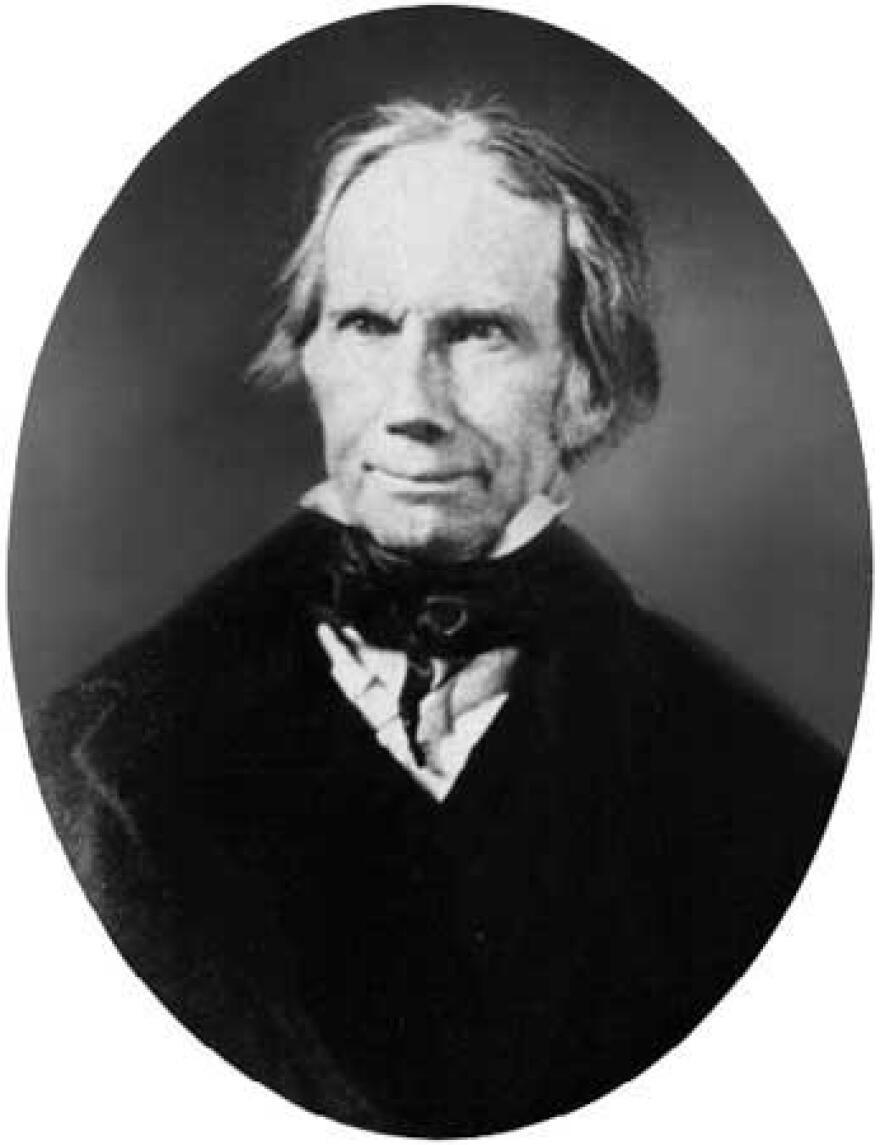Whether you've just moved to a new city or have been a life-long resident, sometimes street names can catch your attention.
This week's Bubbler Talk question came from Whitefish Bay resident Ellen Parmelee who asked WUWM: "When I moved to Whitefish Bay two years ago onto Henry Clay Street, I wondered why a street there would be named for Henry Clay?”

Henry Clay lived from 1777 to 1852 and invented the phrase "a self-made man," which he applied to himself. Born in Lexington, Kentucky, he rose from rags to riches, becoming one of the most powerful and influential politicians of his day, according to author Sidney Blumenthal.
Blumenthal just released the first of four books on Abraham Lincoln's political life and notes that Clay was Lincoln's "beau ideal."
Clay was a state legislator, a senator, Speaker of the House, Secretary of State, a founder of the Whig party and even ran for president. He is perhaps best known as "The Great Compromiser" for his role in designing the Compromise of 1850, which tackled the ever-expanding issue of slavery between the North and South.
Without any clear connection of Henry Clay to Wisconsin, WUWM turned to Tom Fehring. He's a local author and member of the Whitefish Bay Historic Preservation Commission.
Fehring looked into the archives and at old maps; however, Fehring admits that the question had him stumped.
"I spent some time digging into early street history of Whitefish Bay, and what I found is that the street initially was called Whitefish Bay Port Washington Road. It's kind of a strange name, but even looking at the early Sanford plot maps shows that name," he explains.

According to Fehring, the street originally connected to a private Whitefish Bay toll road, used mainly by residents as well as visitors from Milwaukee who wanted to go to the Pabst Whitefish Bay Inn – a popular resort at the time.
"That toll road, [what is now Lake Drive], essentially ended at what we now think of as Henry Clay and then it headed west and linked up with Port Washington Road. [Whitefish Bay Port Washington Road] held that name until 1919 in which it was renamed Washington Avenue," he says.
In 1926, the street name was again changed to Henry Clay Street. According to Fehring, there are no definitive records or statements showing why the name was changed again, but he has two theories.
The first, that as Whitefish Bay dirt track roads were becoming more formalized, city officials wanted a unique name since there were several other streets and avenues named Washington throughout Milwaukee and in the village at the time.

Fehring's second (and preferred) theory is that the street was renamed after the Henry Clay Middle School, which was built in 1918 after the original Whitefish Bay School burned down in 1917.
"My guess it that it may simply have been that they were looking for a unique name...since Henry Clay school was located on that road, perhaps people already began referring to it as Henry Clay Street," he says.
Although we may not have a concrete answer, Fehring says the question "got me thinking on it, and I'll probably do a little more digging to see if I can find out anything."
Have a question you'd like WUWM to answer? Submit your query below.
_









